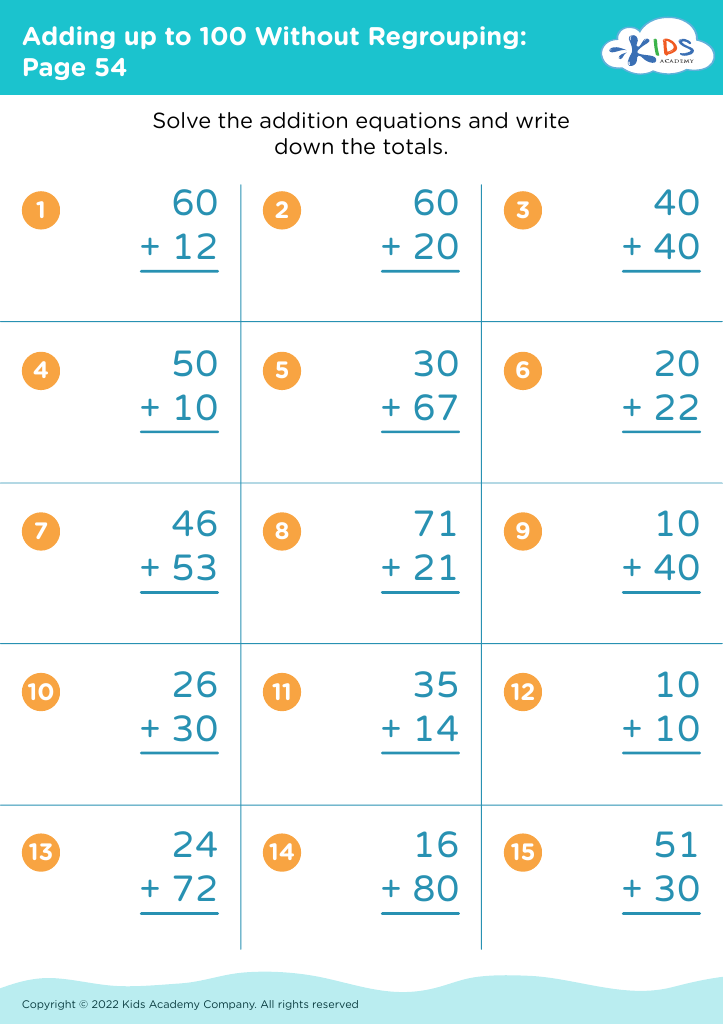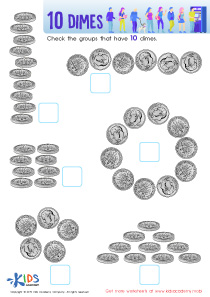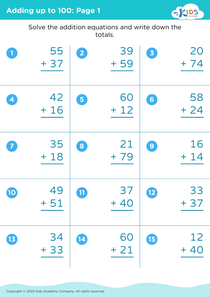Comparing Fractions Adding up to 100 Without Regrouping Worksheets for Ages 7-9
11 filtered results
Difficulty Level
Grade
Age
-
From - To
Subject
Activity
Standards
Favorites
With answer key
Interactive


















